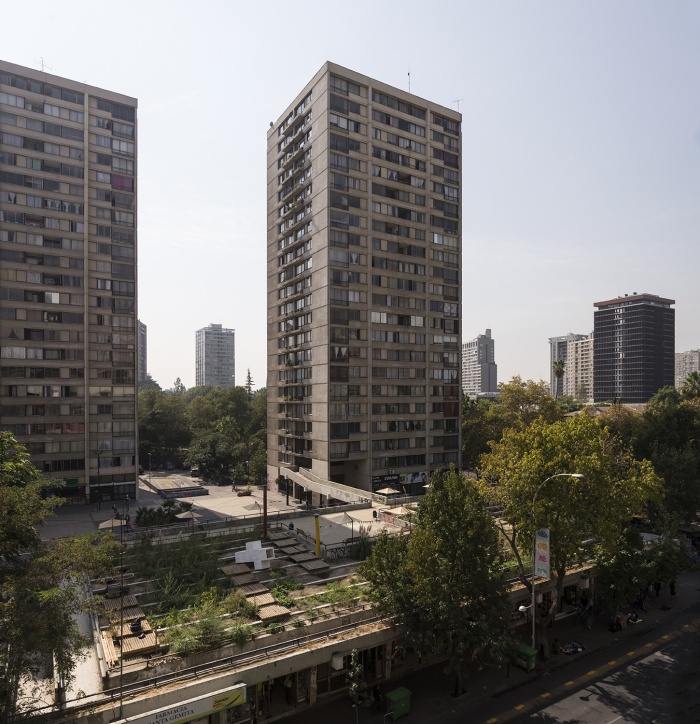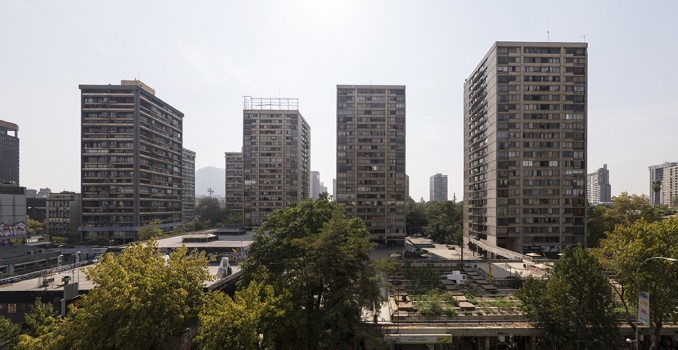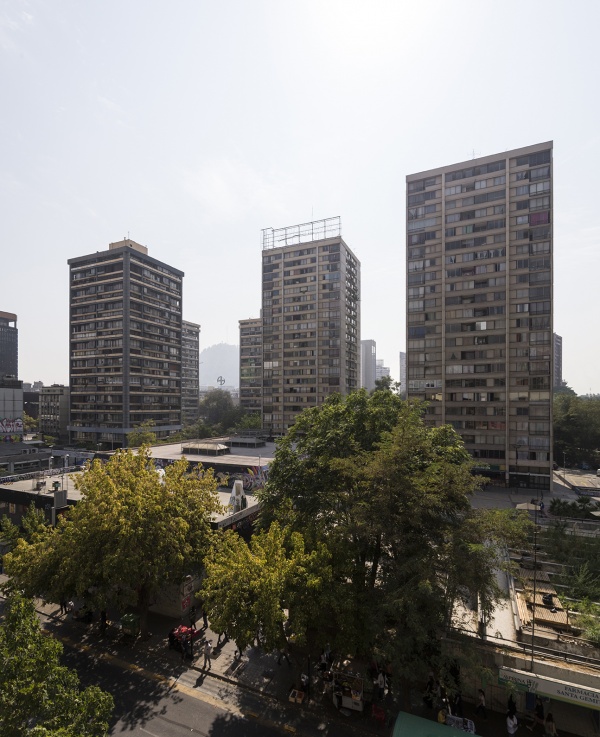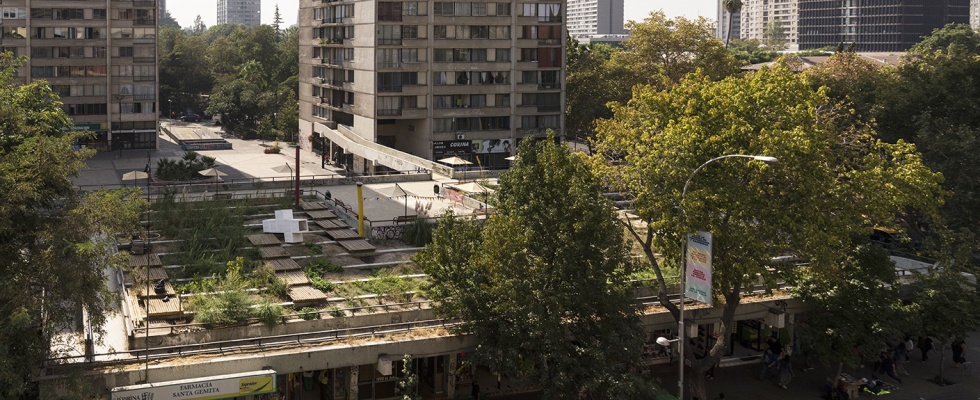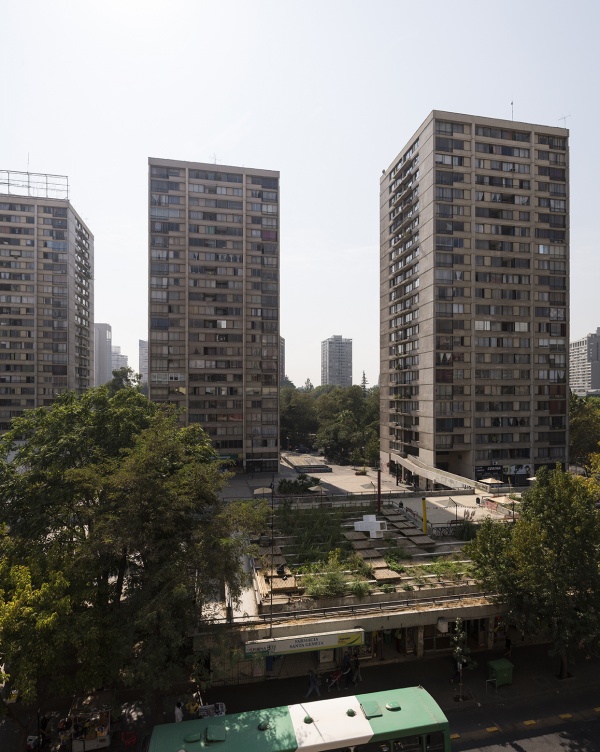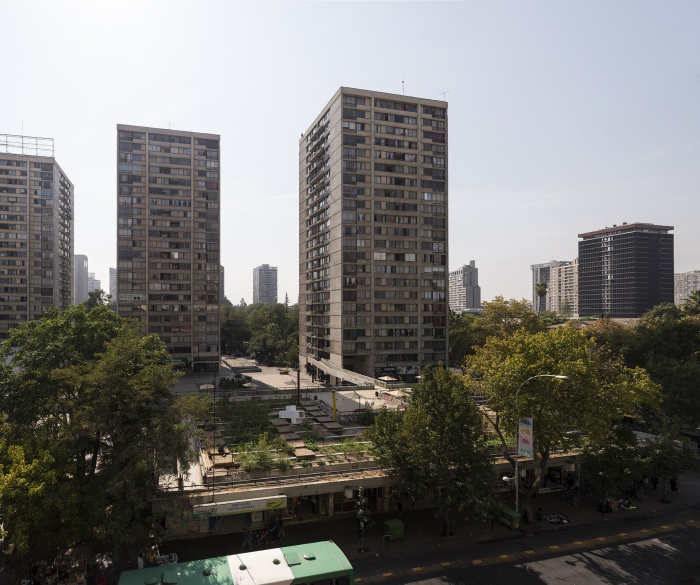Location: 38, 51 Avenida Portugal, Santiago
Preservation Status: None
Pasarelas Verdes is an initiative developed by architectural students from the University of Chile that seeks to reclaim the vertical space of the remodelling carried out in the San Borja housing complex, understanding the social and architectural value behind the reutilization of this urban landmark.
The remodelling of this space was a case study of the Architectural Design Workshop of the thechers Rodrigo Toro and Henry Bauer. For this project the students were in permanent contact with the residents of the Torres San Borja, undertaking a comprehensive collection of data relevant to the community.
The project consists of the integration of urban gardens, public furniture and elevated parks.
The value of the San Borja residential complex is to be a housing construction of quality in the public space.
In 1953, during the Government of Carlos Ibáñez del Campo, Decree-Law n ° 285 was issued, creating the Corporación de Vivienda (Housing Institute), CORVI. CORVI focused public action on habitation to better design and expand public housing – economic action, and in the execution, urbanization, restructuring, renovation and reconstruction of neighborhoods. In this context, CORVI was a central drive in the development of high-rise buildings, and changed the profile of various cities in our country such as Santiago, Valparaíso, Viña del Mar, Concepción and Antofagasta.
Therefore, the San Borja housing complex should be considered as part of a modern urban creation, designed to better plan the coexistence of the new modern families of the 1960s; their process of habitation, and above all to take advantage of the public space. It is a residential high-rise, a new discourse and construction for the so-called neighborhood unit. This complex was planned under the Presidency of Eduardo Frei Montalva, in 1969. Nearby was the San Francisco de Borja Hospital, which gave name to the district and in 1977 moved to the Avenida Matta area.
Fernando Castillo Velasco poses that discussion should not focus only on the standards of urban planning and regulatory bodies. The approach, he says, must be on the quality of life that is being generated for users themselves. “We have to take into consideration that families in the cities have needs, desires and hopes for a better life that go beyond the architects’ proposals.” Of the residential high-rises, he states that the solution must go beyond merely stacking residencies one above the other. “…if we have to resort to the high-rise, this should not only be a superposition of housing rising upward ( that we could equally pile to the side), but every time we look at organizing the life of families in community, we cannot limit ourselves to attaching one building to another; we must try to create a new city.” Doc. Centro de estudios arquitectónicos, urbanísticos y del paisaje, Universidad Central.
